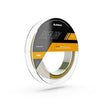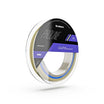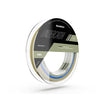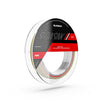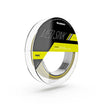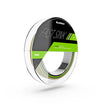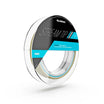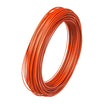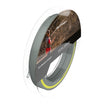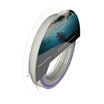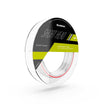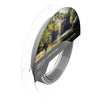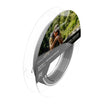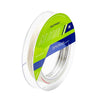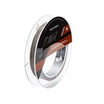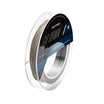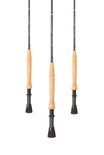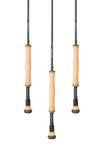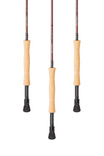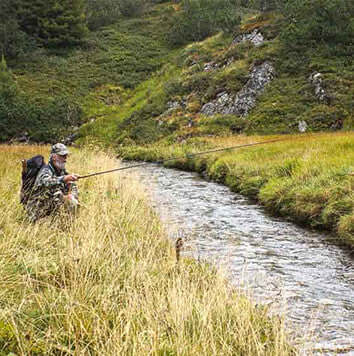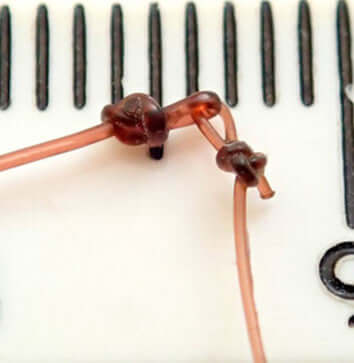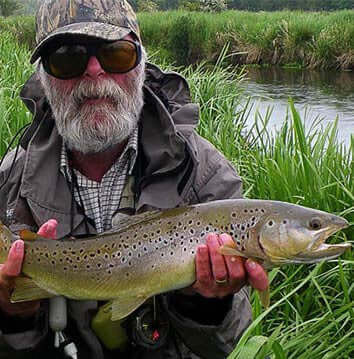I love fishing tiny brooks, so small & often so overgrown that virtually nobody else considers them to be worth fishing. I love the challenges of firstly getting close enough to the fish without spooking them & secondly presenting a fly effectively in what are often very demanding situations. The fish may be small but you can be sure they are all wild: no tame, overgrown stock fish in these unsullied streams!
The first essential is to locate your micro-brook. In some cases they may be a neglected part of an established club fishery: one of my favourite small streams is Thornton Beck near Pickering in North Yorkshire & although the fishing on a couple of miles is controlled by the Pickering Fishery Association most club members consider it to be unfishable due to the tree-cover & fallen trees in the stream. In other cases the stream may be so small or so far from the nearest access point that nobody bothers with them & permission from the landowner must be sought, whilst some may be in the middle of towns & cities where the fishing is free. A search on an OS map or Google Maps/Google Earth is well worth the effort.

Stuart Crofts on Thornton Beck, North Yorks
So how do I approach the challenges of fishing tiny streams?
Stealth is probably the most important requirement if success is to be achieved. These tiny, neglected streams do not contain tame stock fish that will tolerate a careless approach & being rarely fished the residents have not been habituated to the presence of people on the banks & so are hyper-spooky. Cryptic/camouflaged clothing is the order of the day, teamed up with a low profile & super-slow movements. My knee/shin pads get a lot of use when small stream fishing. Furthermore I avoid false casting at all costs.

Keeping a low profile on an open stretch
If they are heavily overgrown with a low canopy of trees I’ll opt for a short rod (5 to 7’ long) that has a progressive middle to tip action to facilitate roll casts. As for line choice, I like the lightest line that is feasible, typically a 1 to 3 weight. Until recently I have used a double taper line but over the last year I have been impressed with the casting & presentation that is possible with the Sunray Stuart Crofts’ Micro Thin line teamed up with a light, 4’, (Luke Bannister) furled leader that Stuart had made to match the line & to which I attach about 4 to 6’ of tippet.
Casting in the tight confines of a ‘Jungle Stream’ can be challenging, requiring the angler to have a range of casts in his or her armoury. Particularly useful are Roll Casts & Bow & Arrow Casts. Another very useful cast is to allow the line & fly to trail/drift downstream till it is under tension then sweep the rod forward, loading it against the pull of the water surface. Having learned the Italian Style of casting, with its high line speed & tight loops, I tend to underline the rod by one line weight even though I’m usually fishing at very short range (some folks prefer to overline the rod by one line weight at such short range). Furthermore, the Italian style Totally Under The Tip Cast is amazingly effective at punching a fly deep under the overhanging canopy.
If the stream is open with few overhanging trees & particularly if it is fast flowing with complex currents I will opt to fish with a Tenkara rod, a 0.275mm/12lb diameter Hi-vis fluorocarbon casting line that is 3 to 4’ shorter than the rod & 2 to 4’ of tippet. With this set up I can present my fly ‘fly first’ which significantly reduces the risk of scaring the fish & also ensures that the first thing that the fish senses is the fly landing on the water (not the line) thus focusing its attention on the angler’s offering. Furthermore high sticking with these long rods & superlight line plus tippet no longer than the rod allows one to fish with virtually no tippet (or line) on the water surface, thus eliminating drag & facilitating the application of subtle induced movements to the fly (dry or wet), when required.
What of flies? In most cases these waters do not produce prolific fly hatches & the fish tend to be opportunistic. Terrestrial insects can be a major item in the trout’s diet. On wooded streams caterpillars, wood ants, aphids & beetles frequently fall from the overhanging branches, particularly on windy days, whilst on open streams grasshoppers & beetles fall into the water from the bankside vegetation. My most frequently used flies are;
Black Foam Beetles (size 16 to 12)
Chernobyl Ants (size 14 long shank)
Hackleless Elk Hair Caddis or
F Fly (size 14)
Klinkhammers (size 14 to 10) (black or olive)
& Daddy Long Legs (size 14 short shank hook with an extended body of brown chenille).

Tenkara on a tiny brook

A nice fish for a tiny brook
Anyone interested in joining Pickering Fishery Association which has small stream fishing on Pickering Beck & Thornton Beck can contact the club through its website.



